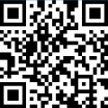

Haoyong Automotive Controls
Replacing a driver-side mirror is a critical automotive repair procedure that requires precision and an understanding of modern vehicle systems. The process involves the removal of the damaged mirror assembly, which is typically mounted to the door via a base plate secured by specialized fasteners, often Torx bolts (e.g., T15, T20, or T30 size), and the installation of a new, compatible unit. Modern mirrors are complex assemblies integrating multiple components; a standard replacement mirror assembly can weigh between 1.5 to 4.5 lbs (0.68 to 2.04 kg) depending on the vehicle's size and features. A key technical consideration is the mirror's power system, which operates on a standard 12-volt DC automotive electrical system. The replacement unit must match the Original Equipment Manufacturer (OEM) specifications for glass curvature, which is precisely calculated to provide a specific field of view, often between 15 to 20 degrees of convexity for the passenger-side mirror to minimize blind spots, while the driver-side is often less convex. For vehicles equipped with Advanced Driver-Assistance Systems (ADAS), the mirror may house vital sensors. For instance, blind-spot monitoring sensors typically operate on a 2.4 GHz or 5.9 GHz frequency band and require precise calibration post-installation, with a tolerance of less than 0.5 degrees to function correctly. Heated mirror elements can draw between 2 to 5 amps of current to effectively defrost, achieving surface temperatures of 50-70°C (122-158°F) within minutes. The entire replacement process, when performed methodically, can be completed in 45 to 90 minutes, ensuring all electrical connections, such as the multi-pin connector with 6 to 12 terminals, are securely mated to prevent malfunctions in power adjustment, heating, or turn signal functions.
The need for a driver-side mirror replacement arises in several distinct scenarios, each with its own technical nuances. The most common is accidental damage, such as a collision with another vehicle, a stationary object like a garage door frame, or vandalism. In these cases, the mirror housing, cap, or glass may be cracked or shattered, necessitating a full or partial replacement. Another frequent scenario is weather-related damage; extreme cold can make plastic components brittle and prone to snapping, while hail impacts can crack the housing or glass. For owners of vehicles with advanced features, a malfunctioning electronic component within the mirror is a key application for replacement. This includes the failure of the actuator motors responsible for power adjustment. These small DC motors, which consume around 1-3 amps under load, can burn out, leaving the mirror stuck in a single position. Similarly, the heating element, a thin grid of resistive wire printed on the glass substrate, can delaminate or fail electrically, rendering the defrost feature inoperative. The failure of integrated Blind-Spot Monitoring (BSM) sensors or cameras, often due to impact damage or internal electronic failure, also requires a complete mirror assembly swap, as these components are typically sealed units. Furthermore, aesthetic upgrades represent a proactive application scenario; owners may choose to replace a standard mirror with a stylized, color-matched, or sportier design to enhance the vehicle's appearance or to add functionality like integrated turn signal indicators or puddle lamps that project an image onto the ground.
Proper maintenance of a driver-side mirror, whether OEM or newly replaced, is essential for ensuring its longevity, optimal performance, and safety functionality. Regular and correct care can prevent premature failure and maintain clarity.
Cleaning: The mirror glass and housing should be cleaned regularly using automotive-specific cleaning products. A pH-neutral car wash soap diluted in water is ideal for the housing and mirror backplate. The glass itself should be cleaned with a dedicated glass cleaner sprayed onto a soft, lint-free microfiber towel—not directly onto the glass—to prevent overspray from seepage around the edges and potentially damaging electrical components for heating or dimming. For mirrors with auto-dimming functionality, which relies on a thin electrochromic layer, harsh chemicals like ammonia-based cleaners must be avoided as they can permanently damage the sensitive coating. The cleaning process should involve gentle wiping to avoid applying excessive pressure that could misalign the glass or damage the positioning motors.
Inspection: A routine visual inspection is a crucial maintenance task. This involves checking the entire assembly for any hairline cracks in the housing or glass, which could allow moisture ingress and lead to internal corrosion or electrical short circuits. The tightness of the mirror's physical attachment to the door should be verified; if the assembly feels loose, the fasteners inside the door panel may need retightening to the manufacturer's specified torque, which typically ranges from 8 to 15 Nm (71 to 133 in-lb). For power mirrors, periodically test all functions: the adjustment switches should move the glass smoothly in all directions without strange grinding noises from the actuators, the heater should activate and effectively clear condensation or frost within a few minutes, and any integrated signals or lamps should illuminate brightly.
Protection: To preserve the mirror's aesthetics and function, protective measures are recommended. Applying a hydrophobic sealant or a dedicated mirror rain repellent product to the glass can significantly improve visibility during inclement weather by causing water to bead up and roll off. If parking in a tight space or garage is a regular occurrence, consider installing clear paint protection film on the mirror cap to shield it from scratches and scuffs. During winter, exercise caution when de-icing; use a soft brush or a lukewarm defroster instead of sharp tools or boiling water, which can crack the glass or damage the housing. Finally, when using automatic car washes, ensure the mirror is folded in (if equipped with a power fold function) to minimize the risk of it being snagged or damaged by the mechanical brushes.


Mr. Hansol Kim